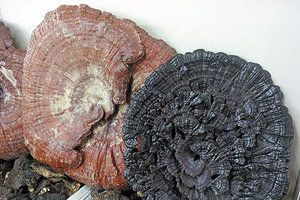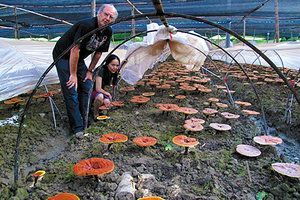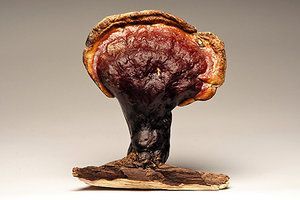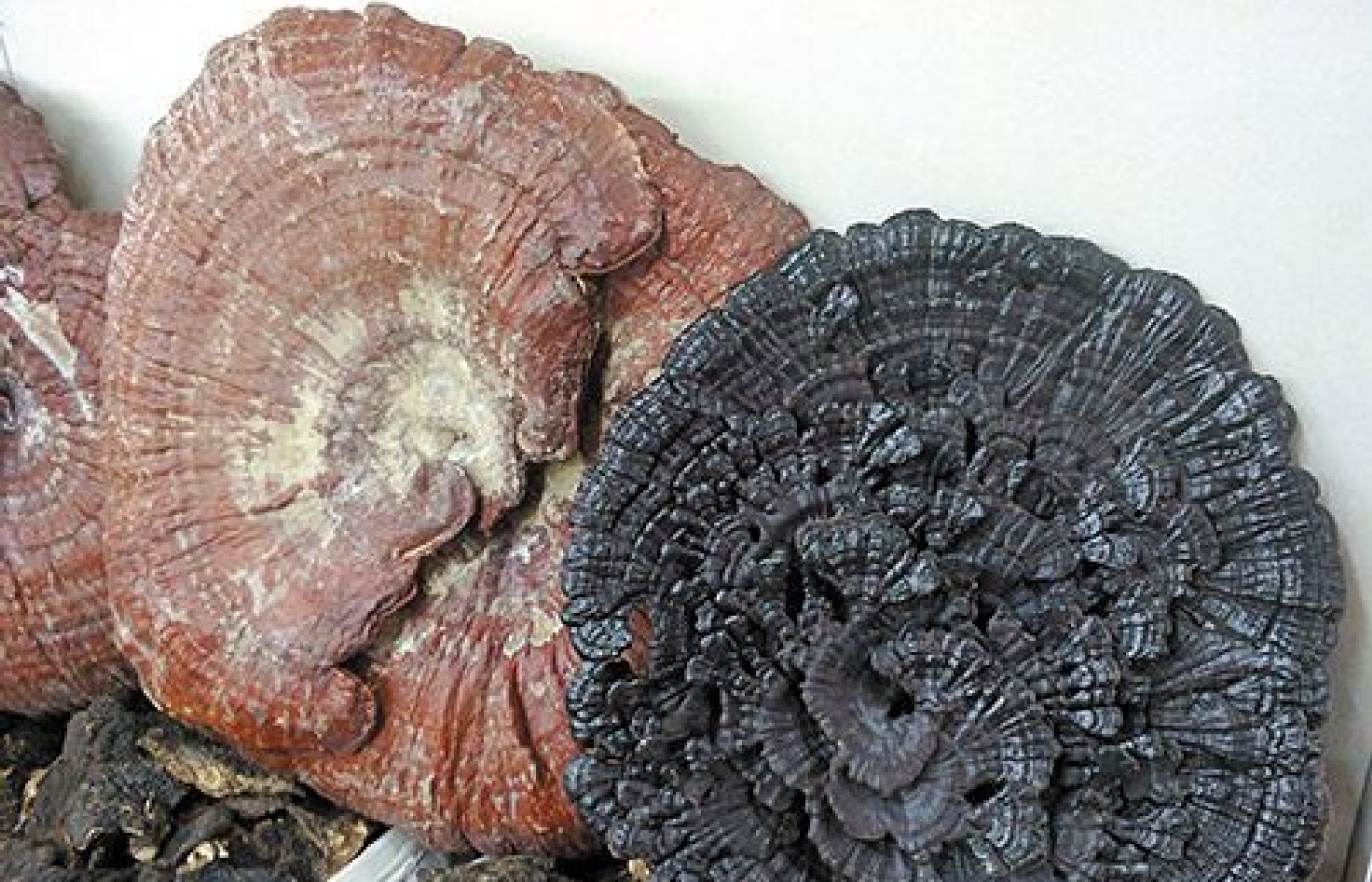Whether you accept it, avoid it or live somewhere in between, insurance coverage has become a defining issue for our profession. Patients increasingly expect to use their benefits, practitioners want to be compensated fairly for their time and expertise, and the system itself remains – at best – fragmented. The encouraging news is that coverage has expanded in meaningful ways. The challenging news is that reimbursement, across the board, remains inadequate.
What You Should Know About Reishi Mushroom
The ultra-important, widely-known herb most commonly known in America as "Reishi" is a woody fungus (mushroom) that has been used in Asia since prehistoric times. The Chinese name for these kinds of woody fungi is Ling Zhi. Though the herb was apparently discovered in ancient China or Korea, it is most widely known in America as "Reishi."
The name "Reishi" generally refers to one of several species of woody mushroom, including Ganoderma lucidum, Ganoderma sinensis, Ganoderma tsugae and a few other closely related species. Because Reishi can refer to a variety of species, different effects and prices can be expected for the products made from them. The names "Reishi" and "Lingzhi" literally mean "Supernatural Fungus." That pretty much says it all.
Reishi is arguably the most important and most revered herb used by Asian people throughout history to promote radiant health, longevity and a more centered state of mind. It is known to be among the most protective herbs in the world. Reishi provides immunological, neurological, metabolic, hepatic and vascular protection, among other functions. Traditionally, it is valued as a tonic herb that can pave the path to radiant health on all levels. It was prized by the Taoists, Buddhists, royalty and herbalists of all levels. Research conducted in the last two decades has verified a vast number of actions. Reishi contains hundreds of biologically active constituents that benefit virtually every cell of the human body in some way. An online search of the scientific research on Reishi can be an endless, joyful and enlightening path, revealing a multitude of reliable benefits and potential uses. It is best used as a primary tonic, an herbal dietary supplement, on a daily basis throughout one's lifetime. Reishi is very safe and may be used by anyone to promote radiant health and longevity.
Like all herbs, especially the tonic and major remedial herbs, Reishi grows wild in a variety of natural environments, and is also widely cultivated. Both wild and cultivated varieties are commercially available. Reishi is such an important herb that it is cultivated throughout Asia and even in America for sale into the United States and the international market.
You, the acupuncturist-herbalist, have dozens of choices of Reishi products to choose from. The tendency in America is to look at the label or sales sheet of a product and see that it has "Reishi" (Lingzhi, Ganoderma), and to simply say to yourself: "Okay, this has Reishi, it seems like a well-known company, the price is right, it has an attractive label, I think this works for my practice – this is what I'll go with...." This is not great herbalism. Since you are a professional herbalist, it is in the best interest of your patients and your practice to be an expert on the major herbs like Reishi. Beware…not all Reishi is created equal.
There are many varieties of Reishi, many styles of collecting or cultivating it, many ways of processing it, and many ways of judging it. With a little bit of practical knowledge, you can obtain and provide a superior product to your patients. Let's become a Reishi Connoisseur.
What is Reishi?
Reishi is found growing in Asia in mountain forests. These forests are quite remote and are generally completely free from the pollution that plagues most cities in China. Reishi also grows wild in almost all regions of the world, but commercial and medical use of these varieties is uncommon.
All forms of Reishi are polypores, an extensive and diverse group of woody mushrooms found throughout nature. Polypores have a hard, woody nature and tend to grow on trees. Polypores have tubes on the underside of the fruiting body (the exposed mushroom part). Spores are produced in these tubes and the spores are released through thousands of pores on the underbelly of the mushroom head. Ganoderma mushrooms produce millions of spores which are released into the environment within a very short window of time when the fungus is ready.
The Reishis used in herbalism tend to have a shiny appearance that looks like they have been varnished lacquered. The color of the skin can vary from species to species and variety to variety. One fungus may produce one or several fruiting bodies, but not usually more than three. The fruiting bodies can be flat headed, cloud shaped, very small (as small as 2 inches) or quite large (as large as 12 inches or more). Commonly, the heads are in a middle sized range. Reishi is capable of growing for many years, but the fruiting bodies are often eaten by animals or humans when it is they are less than one-year-old.
Color can vary greatly. Ganoderma lucidum and tsugae tend to be brick red, but can be purplish-red or purple. Ganoderma sinensis is black. The color is traditionally held to be very important, as an indicator of function, which we'll discuss in a moment.
When Ganoderma is growing, even when mature, it has a leathery, slightly spongy feel. But soon after harvesting, the fruiting body (mushroom head and stem) will harden and become quite firm (woody). The fruiting body, the part of the mushroom that has really been associated with Reishi use throughout history, can be stored for a year or two, but eventually will decay. People sometimes keep Reishi mushrooms around for good luck, but they should be consumed within a year or they will be lost.
Kinds of Reishi
There are literally dozens of species of Ganoderma mushroom. But only a couple are widely used in herbal commerce as "Reishi": Ganoderma lucidum and Ganoderma sinensis. Ganoderma lucidum is by far the most common variety now used in herbalism.
Both species can be collected from the wild. They grow almost exclusively on various kinds of hardwood trees in mountainous forests throughout Asia. The specific kind of tree can, however, varies according to location, and can have a huge impact on the look and chemistry of the Reishi. A great deal of knowledge concerning the wood upon which Reishi grows has been gained through the centuries and is being deeply explored by researchers and growers. The wood that Reishi grows on naturally in the mountains is known as Duanmu (or Duanwood™), meaning "authentic or preferred wood."
Another variety that is also available and looks so much like Ganoderma lucidum that even experts can get them mixed up is Gan-oderma tsugae. However, Ganoderma tsugae grows primarily in the American northwest and prefers conifers like pine and hemlock as their duanmu.
Depending on where the Reishi grows and on the type of wood it grows on, it can take on a pretty large number of shapes and sizes. These are known as "varieties." Reishi is innately an odd-shaped thing – no two are identical. Once you add in latitude, altitude, the tree upon which it grows (duanmu), temperature range, wind conditions, environmental microbes, light conditions, air con-ditions and so on, the shape can change dramatically. With the change in shape, there is also a significant change in biochemistry and biological activity.
Ganoderma lucidum, Ganoderma tsugae and Ganoderma sinensis more often than not have a stalk, but sometimes they may not. They almost always have a head, but sometimes they do not. It is generally true that the stalk emerges from the side of the Reishi in the wild, while it emerges from the center of the fruiting body cap when cultivated.
Ganoderma lucidum is often referred to as "Red Reishi" because it is usually a brick red color. Ganoderma sinensis is often referred to as "Black Reishi" because the skin of the fruiting body (the "mushroom") is usually jet black. Ganoderma tsugae is also referred to as "Red Reishi." Ganoderma lucidum and Ganoderma sinensis are widely cultivated in Asia, accounting for their widespread usage in herbalism and dietary supplement commerce.
Here are photos of Ganoderma lucidum that have grown in different environments:

| Wild Reishi (Changbai Mountain, Manchuria), Duanmu (Duanwood™) Reishi (Wuyi Mountain, Southeastern China), Mongolian Reishi (Mongolia), Antler-Shaped Reishi (Heaven Mountain, Northwestern China/Central Asia) and Purple Reishi (Kunlun Mountains, Southwest China). All are the same species, but they look very different from each other. They have dramatically different chemical compositions that influence their bioactivity when consumed by animals, including humans. |

|

|
Wild and Cultivated
Herbs that are collected by native herb hunters from the wild are generally highly prized. Herbs that grow in the wild are very hardy and adaptive. They have struggled to survive to maturity and overcome enormous odds and obstacles. They have survived extreme weather and escaped from or repulsed predation by animals, large and small. The defensive mechanisms of these plants have been fully developed. Wild plants have powerful Jing, meaning that their genetic lines are potent and resilient. They are hard to stop.
Wild plants have an abundance of Qi, meaning that they have the adaptive vitality to survive and even thrive in harsh, shifting environments. And they have an abundance of Shen. Shen is the spirit of the plant (in the case of Reishi, the spirit of the mountain forest), a botanical attitude of power and beauty. Wild plants are almost always stronger than cultivated plants. They have more of the Three Treasures (Jing, Qi and Shen).
Wild Reishi is collected in high, remote mountains in Asia; never from regions close to cities, industry or pollution. Wild Reishi, no matter which species or variety, is said to have more Jing and Shen than a similar cultivated variety. That is not to say that cultivated Reishi doesn't have an abundance of Jing and Shen, but the wild variety is at the top of the universe. The epigenetics of wild Reishi are just so clean, robust and sensitive. Furthermore, the collecting of wild Reishi is generally supported by ecologists because the Reishi, being a parasite of forest trees, can be controlled by collecting the fruiting bodies.
Cultivated Reishi
Cultivation, though, has a few advantages over wild collection.
First, cultivated Reishi is highly standardized. All the Reishi grown by one grower will be very similar or even virtually identical.
Wild collected Reishi is a pot luck affair. The wild herb collector goes into a forest and finds Reishis growing on a variety of trees. They may even be different species of Ganoderma, and certainly they will be different based on the microenvironments in which they grow. Some of the Reishi may be years old and some may be newly sprouted. Some may have experienced severe challenges while others may have had gentle lives. The end result is a wide variety, even from one collector from one forest.
Cultivation overcomes this rather random range of mushrooms. The standard method of Reishi cultivation in the Orient is to grow the fruiting bodies on Duanmu (Duanwood™) logs. The type of tree that the Reishi naturally prefers is cut into logs in the forest and used to grow the Reishi. This is a superb method. The Reishi farms that I am familiar with are in the mountains, and are simply created where the trees have been cut. The system is very semi-wild. The best farms use mountain water from a stream or spring. The growers are extremely careful about the water source, always assuring that no industry or other polluters are polluting the water. As a result of this diligence, good Reishi plantations tend to be high altitude. Chemicals are not used by the legitimate growers of Duanmu Reishi. So the Reishi is organically grown, whether certified or not.
Reishi grown by this wood log technique is superb because it is natural, potent, clean and sustainable (ecologically sound). The logs are inoculated in a very clean environment, and once the inoculation has taken, the logs are buried in the mountain soil. Over several months the logs are completely converted to Ganoderma mycelium, the whitish fungal mass. Eventually the fruiting body (the mushroom stalk and head or cap) emerge and grow to maturity.
In some instances, the trees are specifically selected to produce more potent Reishi. Like all living things, Reishi is what it eats. If it is grown on a log derived from a very vigorous kind of tree, the potency of the Reishi will be greater. In China, in the Changbai Mountains of Manchuria, some Reishi plantations are operated by the Chinese Academy of Medical Sciences. These plantations have a relationship with the forestry service. There is a certain kind of wild, indigenous tree that grows very powerfully and tends to overwhelm other important trees. It is a very yang tree. These trees are thinned each year and are used to grow Reishi. Because of the extraordinary immunological activity of this specific Duanwood Reishi, this Reishi is used by three hundred hospitals in China as part of their cancer therapy regimens.
There is another category of Reishi cultivation. It may be referred to as the polybag method. This method uses sawdust, rice hulls or similar materials to grow Reishi in polyethylene bags. The method was developed in Japan and has been adapted in the United States. There is little that could be called "natural" about this method – it is quintessential mass scale hothouse methodology. It has not been widely accepted in China, and even in Japan and Korea the method is not widely accepted by the public. The mycelium (white fungal mass) consumes the growing media (sawdust or rice hulls, etc.). Generally, this process is curtailed when all the growing medium has been consumed, but before it produces fruiting bodies. This Reishi mycelium is then simply ground into powder and made into dietary supplements. Though it has some valuable properties, it does not compare to the biochemical magic of the fruiting bodies grown from Duanmu. In China, Reishi mycelium is hardly ever seen or used. Only fruiting bodies are used to make Reishi products. However, in America, this is a very common form of "Reishi" used in dietary supplements.
Reishi Spores and Reishi Spore Oil
When the fruiting body reaches maturity, it suddenly releases spores. This amazing process is a natural wonder. The spores are released from the underside of the head of the fruiting body, and the spores cover the entire mushroom within a few minutes. Within a few hours the entire micro-environment is covered by spores.
The spores are of very significant medicinal and tonic value. They are very rich in triterpenes, one of the main active constituent groups in Reishi. In fact, the spores are far more potent than even the fruiting body. Spores are, however, impossible for humans to digest due to their hard coating. They must be "cracked" by a modern technique to expose the inside of the spore to our digestive system. Cracked Reishi Spores are very highly prized and are more expensive than Reishi. Reishi Spores are widely used in cancer therapeutics in Asia and by people on longevity programs.
The Reishi Spores are an excellent source of an oil, Reishi Spore Oil, that can be extracted once the spores have been cracked. This oil is among the most precious of all substances produced from Chinese herbs. It has been determined that Reishi Spore Oil is about seven hundred times more immunologically potent than the Reishi mushroom, one of the most potent immune tonics in the world. Reishi Spore Oil is a delight to consume.
Judging Reishi Quality and Probable Efficacy
So we see that each variety of Reishi has its own specific qualities, and experts connoisseurs can observe these characteristics to judge quality. Here's how to make your judgments relating to Reishi.
Wild Reishi is a miraculous herb. It has been revered for millennia. If you get it from a reliable company that informs you where the Reishi comes from (mountains, of course), it can be a fantastic tonic herb for your patients. Its chemistry will be mixed but very broad. It is superb for building Jing and Shen, especially Shen. It is among the great Shen tonic herbs in the world. Consistent consumption of wild Reishi will have a noticeable positive impact on your clients' Shen, including their peace of mind, joy, emotional stability, optimism, sleep, clarity of thought, and so on. Wild Reishi has excellent effects on all the systems of the body. Most of this wild Reishi is Red Reishi (Ganoderma lucidum). Purple Reishi (also Ganoderma lucidum) is also available. This is a variety that grows in Western China. It has very potent Jing (and Shen) benefits and has been highly sought after by longevity enthusiasts (Taoists) throughout the centuries.
Duanmu (Duanwood™) Reishi is the world-standard for excellent Reishi. It is consistent, natural, clean and potent. Depending upon the wood (logs) upon which it is grown, it can have profound immunological, cardiovascular, neurological and hepatic effects. It is extremely reliable. Brand matters however, because many trees can be used and only some are "super-Reishi" producing. Use only Duanmu Reishi that has been mountain grown, from remote forests and nurtured on mountain water. "Flatland Reishi" is a waste of money when you can get high altitude Reishi for the same price.
Ganoderma lucidum is the most potent species. It grows only on hardwood logs. This is the true Red Reishi. Ganoderma tsugae (softwood Red Reishi) and Ganoderma sinensis (Black Reishi) are not considered to be as potent or effective. Ganoderma lucidum is always more expensive than the others because it is proven to contain hundreds of active biochemical constituents that benefit humans and promote radiant health and longevity. It is the real deal. I strongly recommend you use mostly Ganoderma lucidum in your practice and for yourself as a tonic herb.
Ganoderma lucidum can grow in a variety of shapes. Under certain growing conditions, the stem may elongate dramatically and produce a form known as "antler-shaped Reishi." This rare form occurs when there is more carbon dioxide in the air. The form has been proven to have potent immunological actions and is favored by many immunologists and in cancer clinics in Asia, especially Japan.
Reishi mycelium. Not to disparage a good thing or good people, but Reishi mycelium is NOT the herb of immortality. In a world where one can obtain real Reishi fruiting bodies, why use the mycelial mass, a product of inferior quality and benefit? Reishi mycelium is never even extracted. It is just a relatively weak form of Reishi and is never a premium product.
Reishi Spores and Reishi Spore Oil are significantly more expensive than other Reishi products…and worth every penny of added expense to those who consume them. They are an excellent value considering how much more potent they are than even the extracted fruiting body of Reishi. You can find products that contain Reishi Spores and products that are 100% Reishi Spore Oil. Buy from a source you completely trust. Remember that the Reishi spores must be "cracked," or don't go for it. Many clients and patients these days are looking for, and can afford, the BEST supplements they can obtain to assure health and longevity. These clients will very much appreciate you introducing these elite herbal supplements to them. You would be doing them the greatest of services. And you will tend to keep them as clients and patients for a very long time.
Extraction and Consumption
Remember that Reishi cannot be digested by humans if it is raw – no matter how finely it is ground. If a product uses raw, ground Reishi powder, don't bother with it – it is next to useless. Reishi mushrooms must be extracted. Check the extraction ratio to make sure that large amounts of excipient are not being used to cut the product. Many Reishi products contain 50% excipient, while some contain as little as 5%. Obviously, go for the one that has only 5% excipient. Extracts that use almost no excipient in their production are known as "pure yield." This is ALWAYS the best way to go.
Reishi is a bitter herb. The more bitter the taste, the better the Reishi. Most people prefer to take Reishi in capsule form. If you get it as a tea, it must be bitter or forget it. Sugar doesn't really cover up the bitterness. Of course, some hardcore herbal individuals will enjoy the bitterness.
Conclusion
You cannot ever go wrong giving someone Reishi. It is indeed the Mushroom of Immortality and the Mushroom of good fortune. You owe it to yourself and your patients to become a Reishi connoisseur. You should give a high grade Reishi product to every one of your patients and longevity clients. You may even give them more than one Reishi product (for example, you might give them Duanwood Reishi and Reishi Spore Oil). A practice that serves Reishi to everyone will prosper.



